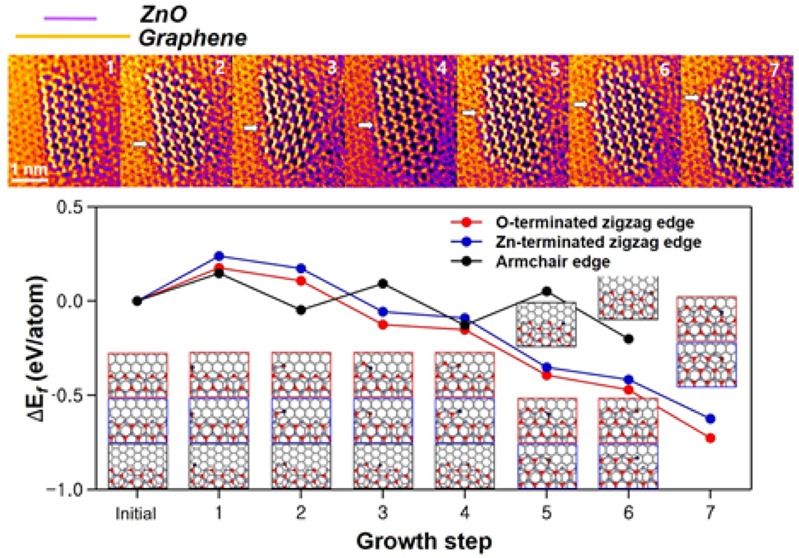- Record: found
- Abstract: found
- Article: not found
Atomic Scale Study on Growth and Heteroepitaxy of ZnO Monolayer on Graphene

Read this article at
Abstract

Atomically thin semiconducting oxide on graphene carries a unique combination of wide band gap, high charge carrier mobility, and optical transparency, which can be widely applied for optoelectronics. However, study on the epitaxial formation and properties of oxide monolayer on graphene remains unexplored due to hydrophobic graphene surface and limits of conventional bulk deposition technique. Here, we report atomic scale study of heteroepitaxial growth and relationship of a single-atom-thick ZnO layer on graphene using atomic layer deposition. We demonstrate atom-by-atom growth of zinc and oxygen at the preferential zigzag edge of a ZnO monolayer on graphene through in situ observation. We experimentally determine that the thinnest ZnO monolayer has a wide band gap (up to 4.0 eV), due to quantum confinement and graphene-like structure, and high optical transparency. This study can lead to a new class of atomically thin two-dimensional heterostructures of semiconducting oxides formed by highly controlled epitaxial growth.
Related collections
Most cited references41
- Record: found
- Abstract: found
- Article: found
Ultrahigh electron mobility in suspended graphene
- Record: found
- Abstract: found
- Article: not found
Gate-variable optical transitions in graphene.
- Record: found
- Abstract: not found
- Article: not found
